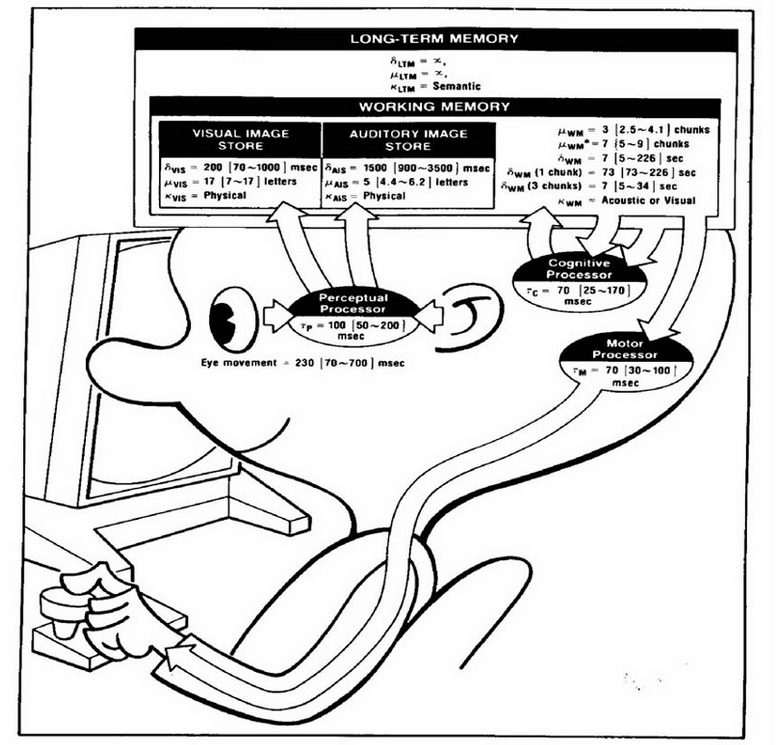As software continues to nibble through every human sphere, there’s one constraint that won’t change: the human mind. This is the first in a series of posts to introduce relevant psychological concepts that designers must learn to guide choosers (a more accurate term than ‘users.) By introducing the concept of Choice Architecture, I hope to explain why insights from psychology enable you to design products that will actually get chosen. In future posts, I’ll go into deeper detail about how designers can compassionately accommodate aspects of our irrational, emotional, human nature.
The Power of Emotion
I’m a big fan of spending time at the zoo watching my favorite kind of chimp, the bonobo. Human reflexes, intuitions, and biases are so deep-seated that we can often glimpse clues to the workings of our own motives and fears by looking at our primate cousins. Complex emotions drive status-seeking, our sense of belonging, and undergird our mission to find meaning in life.
Software/apps focus on specific, task-y actions: spreadsheets, photo sharing, and tax-prep each gave rise to multi-billion dollar industries. Yet even the most numerate activities (data science, hedge funding, programming code) can only be understood fully by recognizing the role of human needs and longings. While we’re powerless to change logical, mathematical, or physical laws, only recently have we started to design-for-humans.
The big bang in human-centered-design starts at Xerox PARC, opened in 1970. Almost ten years later, the discipline of HCI was codified by PARC scientist Stuart Card, along with co-authors Moran & Newell (1983). Focused solely on rational, cognitive information processing, the new-born baby was a huge-headed analog computer.
From “Human-Computer Interaction,” Card, Moran, Newell 1983
Yet another decade passed before more subtle and non-cognitive dimensions were recognized, in Don Norman’s Design of Everyday Things (first published 1988). Norman saw that design is the key to unlocking the superpower potential of computers. On every designer’s short list of essential references, it was initially titled the PSYCHOLOGY of ET. It’s revealing that Norman belatedly found that emphasizing Psychology, instead of design, was a snoozer, apparently sounding too academic.
Yet, we’re now at the stage where the human mind, in all its glory and imperfections, must be the head (and heart) of design thinking.
Three Key Problem Areas
Pause to consider crucial problems that will only be tractable through the application of psychology:
Irrational, Self-Undermining Behaviors
Of the trillions spent on medical care, half goes to treat illnesses traced to behavior: obesity, alcohol & tobacco, persistent neglect of exercise. Though scores of startups aim to crack this nut, they typically hire programmers to encode provably feeble techniques of data-tracking, goal-setting, then add a spice of motivational sloganeering. Once we admit the failure of appealing to logical self-interest, we find a hint of untapped opportunity from indirect, emotional hooks in Pokemon Go, which has inspired hordes to run around outdoors.
Financial Goal Setting
Most Americans have saved ZERO for retirement, and the net worth of the bottom 50% is negative. So far, even consumer-friendly apps such as Mint cross their fingers in hope that, against all evidence, choosers might be persuaded to adopt a savings goals. Clear evidence demonstrates that most people resist setting explicit goals.
Power of Belonging
Social platforms (Facebook, SnapChat, etc) stumbled into the mother-lode of human attention: our longing to belong, to share and be shared with, and even to stay distracted from the ever-present anxiety inside every primate troop. Facebook designers apparently used to say a widget needed ‘more serotonin.’ That very example shows that the use of psychology in software design was inspired by psych-101 generalizations. We ought to turn these soft, fuzzy insights into practicable guides by systematic and principled application.
Designing and Structuring Choices
Designers will increasingly mine the treasure-trove of well-understood behavioral principles, and by learning more about Choice Architecture you can more rigorously integrate these insights.
What exactly does it mean to ‘architect choice?’ The term was introduced by Cass Sunstein (in his co-written book, Nudge). Disney’s theme parks provide an explanatory illustration. Crowds disperse spontaneously, yet deliberate design decisions sculpt the crowd to flow toward rewarding/profitable interactions. Disney anticipates the statistically regular tendencies of people’s free choices (right beats left, downhill attracts, bright illumination exerts a pull, etc). Spontaneous impulses, correctly anticipated, direct people toward channels optimized for enjoyment — and commensurate business viability.
Since the human mind is the ultimate CPU, this transforms psychological tendencies, by analogy, into software design’s (other) laws of physics. Attention should be viewed as the analog of gravity, emotion/motivation parallels Newtonian force, and entropy rules between our ears as absolutely as elsewhere in the cosmos. If psychology is the foundation, behavioral economics comes into its own as the engineering discipline that flows from those statistical patterns.
Mastery of the science & art of choice opens up a panorama of untapped opportunities. The grind of factory labor — in some circles — gave way to the toner dust-lung of the knowledge worker, mining away in cubicles. This soul-crushing work can gradually be transformed into playful, enticing, curiosity-inspiring exploration that’s more productive, and more natural, than anything we’ve seen before. Despondent, self-destroying behaviors invite designers to seek better ways to architect choices. Esthetic and experiential design heuristics can only be improved by deeper understanding (and hence, anticipation) of the tendencies of customer’s minds & hearts.
Choice Architecture as a discipline is still in its infancy. There’s much valuable research, ripe for direct application. In this blog series, we’ll start out by outlining the key areas, providing specific examples of how principles get baked into product experiences.
Making software align with psychological tendencies is what we do every day at Motivation Engineers. I’m always excited to talk with anyone trying to leverage psychology in their own product, so reach out to me to nudge your customers to make the right choice.
Feel free to comment below. More on Paul Sas here.
